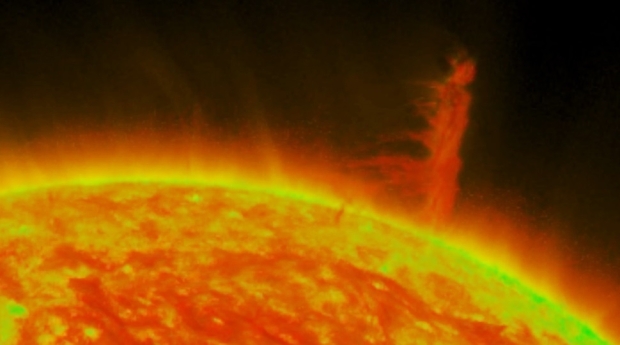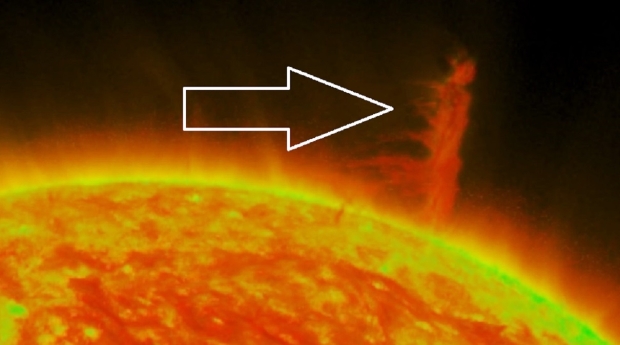Astronomers from around the world have had their instruments pointed at the solar tornado that has been unfurling on the surface of the Sun for the past week.

The above gif showcases the scientifically popular solar tornado, which is a twisted filament of boiling hot plasma that is expanding further and further away from the surface of our star. For three days, the tornado continued to expand, with reports stating that it grew to an astonishing height of 75,000 miles, which is about the same as fourteen Earths stacked on top of each other.
According to astrophotographer Andrew McCarthy, who took to Twitter on March 18, the day the solar tornado was at its highest, and said, "This 14-Earths-tall swirling column of plasma was raining moon-sized gobs of incandescent material on the sun". Furthermore, Apollo Lasky of Naperville, Illinois, who made the above gif using images from NASA's Solar Dynamics Observatory, said the solar tornado was occurring near the Sun's North Pole and grew for a total of three days before it came back down to the Sun's surface.
Notably, Lasky said that he has never seen "anything like it" in all of the years he has been watching the Sun closely. As noted by Spaceweather.com, tornadoes that occur on the surface of the Sun aren't the same as the tornadoes we see here on Earth. Tornadoes on Earth are controlled by hot and cold wind, while solar tornadoes are controlled by magnetism shaped by the Sun's contorting magnetic fields. These magnetic fields push and pull at the Sun's hot plasma, causing it to take unusual shapes and, on the odd occasion, spew out large amounts of plasma into space.

The latter occurred on March 18 when the solar tornado reached its maximum tension, over-torquing itself, causing it to spin out and hurl a cloud of charged particles or solar debris into space. It should be noted that since this event occurred around the Sun's North Pole, our planet isn't in danger of any released solar debris.
In other space news, NASA's Hubble Space Telescope has shocked many eyes across the world with its newest image of the cosmos. This time around, NASA's famous space telescope has honed its instruments on a globular cluster of particular aesthetic beauty, Messier 55. Hubble's image only captured a portion of the star cluster, which is estimated to stretch some 20,000 light-years across. The image will allow astronomers to learn more about star evolution and the evolutionary process of globular clusters in general. If you are interested in reading more about that story, check out the below link.



